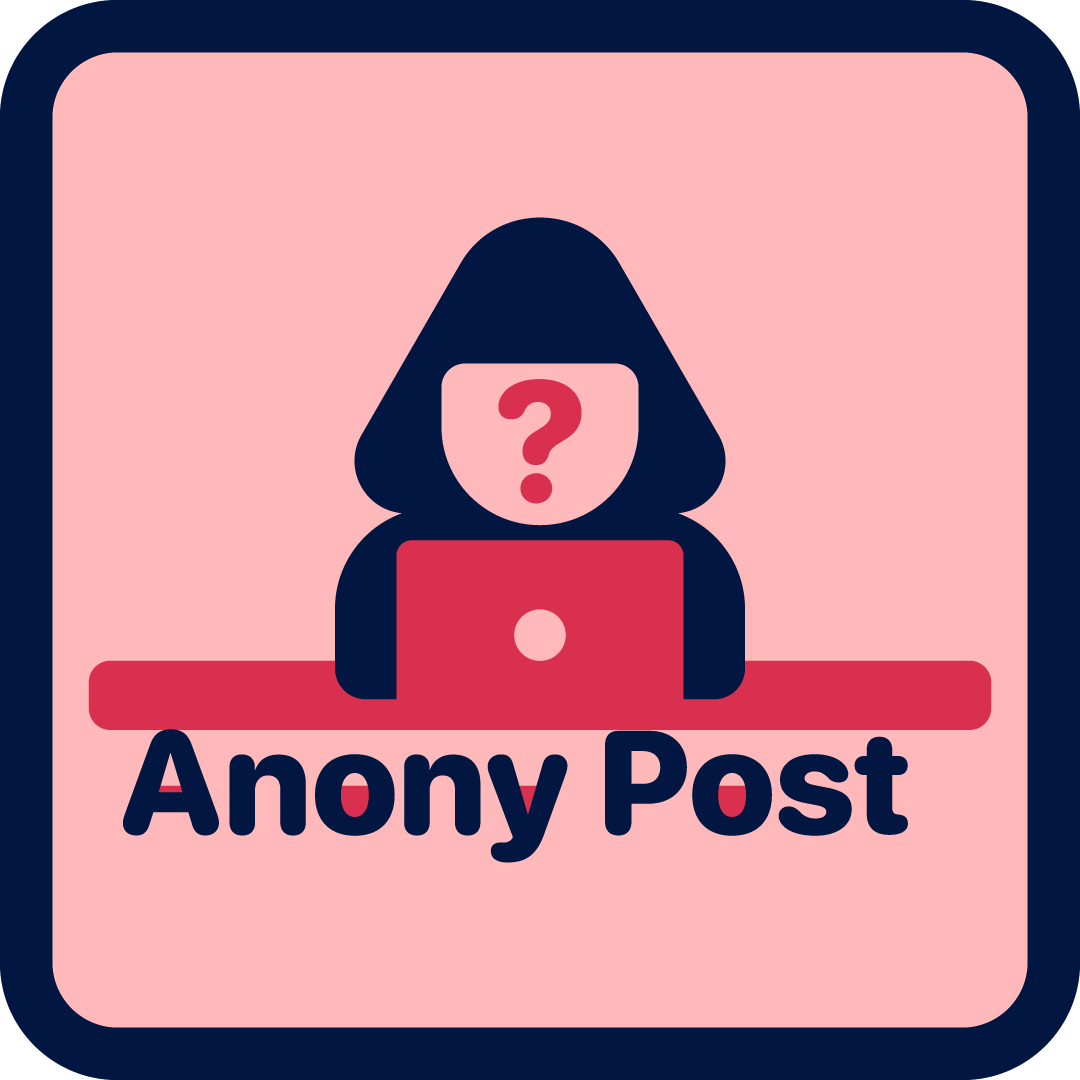Are you curious about the possibility of expressing yourself freely without revealing your identity? In today’s digital age, the desire for privacy and anonymity has never been more prevalent. For those seeking to share their thoughts, opinions, and experiences without the confines of traditional blogging, an anonymous blog presents a unique opportunity. Whether you’re looking to explore sensitive topics, protect your privacy, or simply wish to maintain an air of secrecy, creating a secret anonymous blog can offer the perfect platform for public discussions. This guide will walk you through the ins and outs of setting up an anonymous blog, ensuring your voice is heard while maintaining your privacy and security. From choosing the right tools to navigating the legal aspects, we’ll cover everything you need to know to create and manage a successful anonymous blog.
Creating a secret anonymous blog involves selecting the right platform, adjusting privacy settings, and implementing security measures. Here’s a structured approach:
- Platform Selection:
- Blogger: Use the “Private to Authors” setting to restrict access to logged-in users. This is straightforward through the settings menu.
- WordPress: Utilize its flexibility by installing privacy plugins and customizing settings to control access.
- AnonyPost: Ideal for anonymity, designed for users who prefer not to reveal their identities.
- Setting Up Privacy:
- Configure the platform’s settings to limit access to authorized individuals. For example, on Blogger, navigate to the Permissions section under settings.
- Consider inviting specific users or setting access based on criteria to ensure only intended individuals can view or contribute.
- Security Measures:
- Passwords: Use strong, unique passwords and enable two-factor authentication for added protection.
- Software Updates: Regularly update your blog software to guard against vulnerabilities.
- Content Management:
- Ensure only authorized users can access or submit content. Monitor contributions to maintain privacy.
- Spam Prevention:
- Implement plugins or settings to filter spam comments without compromising privacy.
- Research and Exploration:
- Sign up for multiple platforms to test their ease of use and compatibility with your needs.
- Watch tutorials or documentation to familiarize yourself with each platform’s features.
By following these steps, you can establish a private anonymous blog, allowing you to share thoughts securely and authentically.

Blogging Without Showing Your Face: A Comprehensive Guide
Starting a blog without revealing your identity can be a rewarding experience, allowing you to share your thoughts and opinions freely. Here’s a step-by-step guide to help you get started:
1. Choose the Right Platform
Select a blogging platform that supports anonymity. Platforms like AnonyPost are designed for individuals who prefer to remain incognito. These platforms often offer features that allow you to share content without revealing your identity.
2. Create a Pseudonym
When signing up for the blogging platform, use a pseudonym instead of your real name. This helps protect your privacy and keeps your personal life separate from your online persona.
3. Use Separate Email Accounts
Set up a dedicated email account specifically for your blog. This ensures that your personal email is not linked to your blog identity, adding an extra layer of privacy.
4. Focus on Neutral Content
When creating content, focus on topics that are widely accepted or neutral to avoid potential backlash. Consider writing about social issues, lifestyle tips, or personal views that don’t hinge on your identity.
5. Explore Monetization Strategies
Earn income through affiliate marketing by promoting products or services without disclosing your identity. Look into sponsored posts, though be cautious and ensure the sponsor is comfortable with your anonymous approach. Additionally, sell digital products like eBooks or online courses created under your pseudonym.
6. Engage Anonymously
Interact with other bloggers and readers by commenting on their posts. Use a proxy server or VPN to mask your IP address if needed, though always respect the blog’s comment policies. Build a community on your own blog to foster engagement without revealing your face.
7. Optimize for SEO
Use keywords that align with your content without tying them to your identity. Implement internal linking to enhance SEO and keep readers engaged, focusing on content quality rather than personal branding.
8. Stay Informed About Legal Aspects
Understand the legal implications of blogging anonymously. Consult general legal advice or review blogging policies to ensure compliance with local laws and avoid unnecessary risks.
9. Maintain Consistency
Regularly update your blog with high-quality content to attract and retain readers. Mix up post types to keep your audience engaged while maintaining anonymity.
By following these steps, you can successfully start blogging without showing your face, enjoying the freedom to express yourself while safeguarding your privacy.
Do Anonymous Bloggers Get Paid?
Yes, anonymous bloggers can indeed earn income through their blogging efforts. While anonymity protects their identities, it doesn’t hinder their ability to monetize content. Here are some common ways anonymous bloggers generate revenue:
1. **Affiliate Marketing**: Promoting products or services and earning a commission for every sale made through your unique referral link. Platforms like AnonyPost allow users to share opinions and engage in discussions without revealing their identity.
2. **Sponsored Posts**: Partnering with brands or companies to promote their products or services in exchange for a fee. This requires building trust with your audience and having a substantial follower base.
3. **Ad Revenue**: Monetizing through ads on your blog. Platforms like Google AdSense or Mediavine can help you earn income based on the number of page views your blog receives.
4. **Selling Products or Services**: Creating digital products such as eBooks, online courses, or consulting services to offer value to your readers while generating income.
5. **Donations**: Asking your audience to support your blog financially through platforms like Patreon or Ko-fi, which allows readers to contribute monthly.
6. **Freelancing**: Offering writing or content creation services for other blogs or businesses, often under a pseudonym to maintain anonymity.
By leveraging these strategies, anonymous bloggers can effectively monetize their content while maintaining their privacy.

How to Create a Secret Blog
To create a secret blog, follow these organized steps:
- Choose a Pseudonym: Select a unique username or alias that doesn’t reveal your real identity. This ensures anonymity while blogging.
- Select a Niche: Pick a niche you’re passionate about, combining elements like tech and lifestyle for broad appeal without being too mainstream.
- Set Up the Blog Technically:
- Use WordPress for its flexibility and extensive plugins, despite its initial learning curve.
- Consider hosted platforms like Medium or Blogger for ease of use if you prefer simplicity.
- Set up a separate email account and create a unique username and strong password for your WordPress admin panel.
- Design Your Blog:
- Use a professional design that avoids revealing your real identity, ensuring the blog looks polished yet remains discreet.
- Create Content Strategically:
- Plan posts using a content calendar to maintain consistency and relevance.
- Write about topics aligned with your niche, incorporating personal anecdotes to enhance relatability.
- Develop a unique voice to foster connection with readers without compromising your anonymity.
- Monetize Safely:
- Explore affiliate marketing opportunities once your audience grows, ensuring links are used judiciously to avoid appearing spammy.
- Promote Wisely:
- Share posts on social media using pseudonyms to protect your identity.
- Engage in online communities and forums where your content fits naturally, fostering genuine interactions without revealing your true self.
- Protect Privacy:
- Use a VPN to mask your IP address during postings.
- Disable comments or moderate them rigorously to minimize unwanted attention.
- Keep personal information private and avoid discussing your real life in detail.
- Consider Self-Hosting Later:
- Start with a free host and upgrade to self-hosting for greater control and security as your blog grows.
- Ensure regular software updates and consider obtaining an SSL certificate for HTTPS to build trust with visitors.
- Become Engaged Without Revealing Identity:
- Respond thoughtfully to comments using your pseudonym to maintain anonymity.
- Experiment with guest blogging under a pseudonym to gain exposure without personal association.
By following these steps, you can successfully create and maintain a secret blog, focusing on growth and protection while building a loyal audience.

Can You Have a Private Blog?
Yes, it is possible to have a private blog. Platforms like Blogger allow users to set their blogs to “Private to Authors,” meaning only logged-in authors can view and edit posts. This level of privacy ensures that the content remains accessible only to those who are authorized.
How to Set Up a Private Blog
- Access Control : On platforms like Blogger, navigate to the “Settings” menu and select “Permissions.”
- Privacy Settings : Choose the option “Private to Authors” to restrict access to your blog content.
- Content Management : After setting your blog to private, you can manage your posts and ensure only authorized users can view or contribute to your content.
Blog Access Levels
- Public : Available to anyone on the internet.
- Private to Authors : Accessible only to logged-in authors.
- Friends Only : Limited to contacts within your blogging network.
- Specific People : Invites can be sent to select email addresses.
Security Tips for a Private Blog
- Use strong passwords and enable two-factor authentication for added security.
- Regularly update your blog software to protect against vulnerabilities.
- Monitor blog activity for unauthorized access attempts.
Additional Features
- Enable comment moderation to filter unwanted comments.
- Disable trackbacks to reduce spam.
- Customize your blog’s appearance with themes and templates.
Examples of Private Blogging Platforms
- Blogger
- WordPress
- Other self-hosted platforms may offer similar privacy controls.
By following these steps, you can enjoy the benefits of a private blog while maintaining control over your content and its accessibility.
Can You Run a Blog Anonymously?
Yes, you can run a blog anonymously by taking advantage of platforms and tools designed to protect your identity while allowing you to share your thoughts and ideas. Here’s how you can do it effectively:
Why Anonymity Matters
Anonymous blogging provides you with the freedom to express yourself without fear of judgment or repercussions. It allows you to explore sensitive topics or share personal experiences without revealing your true identity.
Choosing the Right Platform
There are several platforms available that cater to anonymous blogging. One popular option is AnonyPost . This platform is specifically designed for sharing thoughts and opinions without requiring users to disclose their real names or other personally identifiable information (PII). Other options include:
- ProtonMail Blogs : Combines email encryption with blogging capabilities, offering a high level of privacy.
- WordPress with Plugins : You can use WordPress along with plugins like “No Spam” or “Akismet” to filter out spam comments while maintaining anonymity.
- Medium Anon : A feature of Medium that allows users to publish articles without revealing their real names.
Setting Up Your Anonymous Blog
Once you’ve chosen a platform, follow these steps to set up your blog:
- Create an Account : Sign up for an account on the platform of your choice. Most platforms allow you to use a pseudonym or handle instead of your real name.
- Customize Your Profile : Update your profile with a username or handle that reflects your interests and style.
- Start Publishing : Begin writing content on your blog. Most platforms offer user-friendly interfaces that make it easy to create and publish posts.
Staying Anonymous Online
To maintain your anonymity, follow these tips:
- Use Pseudonyms : Create a unique username or handle that doesn’t reveal your real identity.
- Disable Tracking Features : Turn off tracking cookies and analytics on your browser settings to prevent third-party tracking.
- Use Encrypted Communication : Consider using encrypted communication tools like Signal or WhatsApp for private conversations.
- Avoid Overexposure : Don’t share personal details like your phone number or home address in your blog posts or elsewhere online.
Publishing Content Safely
When publishing content on your anonymous blog, focus on the following:
- Stay Within Legal Boundaries : Be aware of local laws regarding free speech and anonymity. Some countries may have restrictions on anonymous blogging.
- Use Caution With Content : Avoid posting content that could lead to harassment, defamation, or other legal issues.
- Monitor Comments : Enable comment moderation to filter out inappropriate or harmful content left by others.
Engage Without Revealing Identities
Your readers can engage with your content by leaving comments, sharing your posts on social media, or participating in discussions. However, always encourage respectful interactions and remind readers to maintain their own anonymity when engaging with your blog.
By following these steps, you can successfully run an anonymous blog and share your thoughts and ideas with the world while protecting your privacy.

Does Anyone Read Personal Blogs Anymore?
Yes, personal blogs are still widely read and appreciated by many online users. According to recent surveys, approximately:
- Over 60% of internet users read blogs regularly.
- 77% of internet users read blogs daily.
<personal blogs continue to thrive due to their ability to connect with audiences on a personal level. Many readers value the authentic, relatable content that personal bloggers share. Platforms like WordPress and Medium host millions of personal blogs, showcasing a vast array of topics from lifestyle and travel to professional advice and hobby guides.
Competitors to personal blogging, such as video platforms like YouTube and short-form video apps like TikTok, have emerged as popular alternatives. However, personal blogs remain a significant part of the content ecosystem, offering depth and expertise that other formats often lack.
Conclusion: Personal blogging is not only alive but also evolving, continuing to capture the interest of readers who seek genuine, personalized experiences and insights.




0 Comments